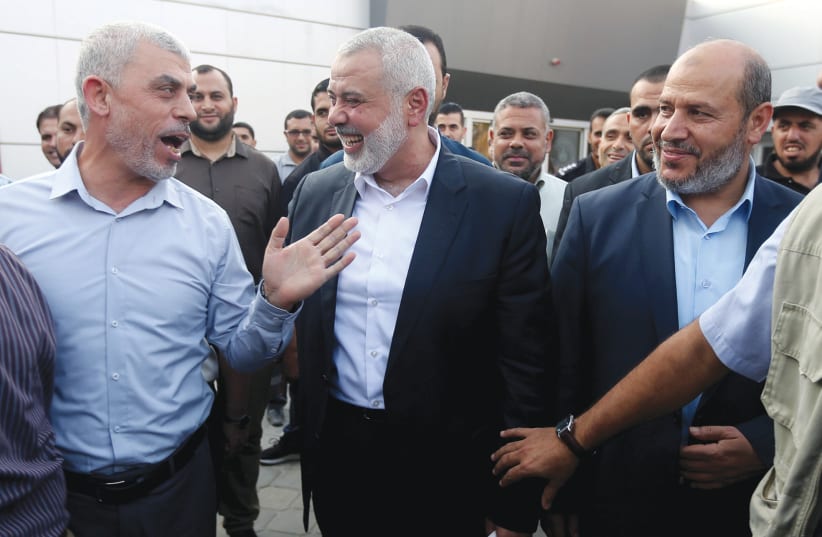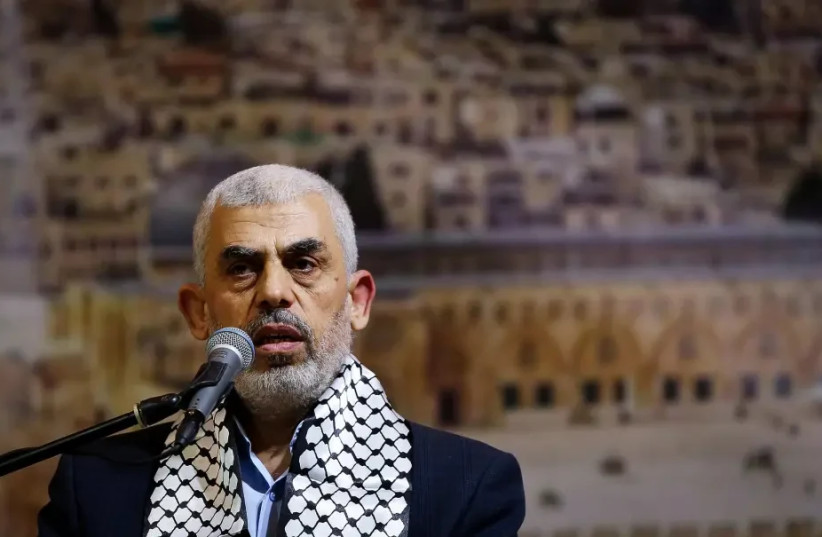The most widespread public frustration regarding the war, after the October 7 failure, concerns Israel’s inability to defeat Hamas. Although Israel put boots on the ground in Gaza and carried out a massive military maneuver, almost unlimited in resources or time, Hamas is still standing on both feet. Even the extensive damage to terrorist infrastructure and militants, and the aerial, naval, and ground supremacy that the IDF achieved, did not lead to its collapse.
For years, Israel wrestled with what to do with Gaza. Among the options outlined by security officials (for example the INSS in 2020), the possibility of a military takeover was ranked as one of the last. The main reservations raised for the occupation of the Gaza Strip concerned the heavy cost of human lives, the chaos that will be created in Gaza, and the lack of international legitimacy for a large-scale operation. However, the possibility that the Hamas regime would not be overthrown was not considered.
Just as it was impossible to imagine the October 7 massacre before its occurrence, so it was impossible to imagine that the strongest military power in the region, which previously defeated several armies in six days, would not be able to defeat a local terrorist organization when forced to do so.
Why then is Hamas undefeated?
The surprising answer, which was constantly under our eyes, is the tunnels – moreover, the underground supremacy gained by Hamas. All the other “relative advantages” gained by Hamas have already been deprived; its activity from inside civilian population centers – through the extensive evacuation, and its method of finding refuge in civilian sites (hospitals, schools, mosques, etc.) by denying their immunity and attacking them. However, precisely the pre-military characteristic of Hamas, its underground activity, was not significantly affected.
The organization populates the tunnels, maneuvers in them, maintains a chain of command, mobilizes armed forces, and holds hostages underground. At the same time, it uses the tunnels as a citadel and continues to excavate new tunnels while fighting. This is the source of its strength and the reason for its survival. Without the tunnels, the war would probably have ended already in October. Although Israel also operates in tunnels, on a significantly reduced scale, it does not permanently stay in them and does not strive to conquer the underground medium as a whole.
In addition, it rightly avoids bringing large forces inside them. Its underground operations are similar in relative scope to the operations carried out by Hamas above ground – targeted and small-scale operations. Hamas rises above the surface, fires anti-tank missiles, and quickly ducks down into the tunnel, and the IDF descends below the surface, destroys the enemy and the infrastructure, and returns to the surface.
The war reality in the Gaza Strip is less chaotic than it seems, and contrary to common thought, there is a border between the IDF and Hamas forces – only it is not where it used to be – west of the kibbutzim – now it stretches at the surface of the ground itself.
The area above the ground is controlled by Israel, and below the ground is occupied by Hamas. During the terrestrial entry at the end of October and the massive operation of the IDF, Hamas forces withdrew to the underground and established a defense line there. Since then, most of the time, there have been mutual combat operations in the enemy’s rear. While for Hamas, the enemy’s rear is now in Jabalya or Rafah, for Israel the tunnels beneath it are the enemy’s rear.
The disparaging statements that are heard in Israel that Hamas leader Yahya Sinwar hides like a mouse in the burrows do not stem from the lack of respect that is involved in searching for him in the deep sands of Gaza, but mainly from the frustration and the (justified) fear that it is not possible with the existing means to go down to the depths of the tunnels and lay hands on senior Hamas officials entrenched in them. The IDF forces entering the depths of the tunnels were exposed to damage due to the trapping of the shafts and the lack of protection of the forces.
Israel has high-end military and security technological successes, however, it was not significantly prepared for underground warfare. Both in terms of dedicated weaponry and trained personnel and combat doctrine; it does not have underground APCs, a tunnel corps, a comprehensive combat doctrine, and other resources required to fight the main medium in which the Hamas enemy is located. The current war teaches us that just as it is impossible to imagine effective naval warfare without battleships, submarines, and naval personnel (or just with a bathing suit) – so it is not possible to defeat a force based underground without the necessary resources.
For this purpose, one must prepare for any combat medium (aerial, naval, and terrestrial), and to defeat by placing boots underground (and not boots on the ground). If the perception that the enemy cannot be defeated without a ground invasion is correct, then in the case of Hamas, it cannot be defeated without an underground invasion – this is the enemy’s territory and there one should maneuver, conquer, and defeat. Even the statement regarding the extent of the tunnels (which reaches 500 km.) does not provide a satisfactory explanation as to why they have not been conquered – there are thousands of kilometers of roads and tens of thousands of kilometers of built-up area in Gaza Strip, yet this did not prevent it from being conquered.
In the first days of the war, along with the shock at the barbarity of Hamas’s crimes, the thought that Hamas had committed suicide was widespread in Israel and the world. Many assumed that the massacre carried out by the organization sealed its fate and that its whole purpose after October 7 was to inflict maximum damage on Israel while being collapsed and destroyed. It seemed as if the “al-Aqsa flood” brought an end to the organization that Israel was willing to contain as long as its threat was limited to “trickling” rockets, sessions of combat once every few years, and launching explosive balloons on a routine basis.
However, the survival of the organization and its senior members after such a powerful campaign of eight months requires re-examining this assumption regarding the martyrdom of the organization. Therefore, the question should be raised: Did Hamas think that Israel would declare an all-out war against it? The answer is probably yes. Did its leaders think they would be able to survive this type of war? Here too, the answer is probably yes.
Hamas knew that it had a strategic asset that it had developed over two decades, which would allow its survival even in the event of a complete occupation of the Gaza Strip by Israel – a terrestrial occupation, but not a sub-terrestrial one. It is possible that this understanding of having in his possession this technology, an underground iron dome, which guarantees an even higher survivability of most armies in the region, spurred it to launch the attack on October 7 and to make full use of this defensive asset, which until then was not being challenged. Knowing that Israel does not have the means to overcome it.
As long as Israel does not have these capabilities, it will probably not be able to defeat Hamas and will have to be content with besieging it and denying its establishment above ground. The recognition of this also stands in the background of the sharp change of attitude of the Biden administration, which at first clearly supported the dismantling of Hamas, but stopped doing so, when realized that, unfortunately, this goal was not practical with the existing capabilities.
Despite the “mousey” and pre-modern image, the use that Hamas was able to make of the tunnels is groundbreaking, giving it technological supremacy in the underground battlefield. Like the Americans, Israel must also look at reality, however frustrating it may be, and strive for relevant change and intensification, but as long as it does not have the technology and resources necessary for a defeat, it must strive for a ceasefire and above all a deal for the return of the hostages. This continues to be the order of the day.
The writer is a political adviser and a member of the researchers forum of the Elyashar Center at the Ben-Zvi Institute in Jerusalem.

